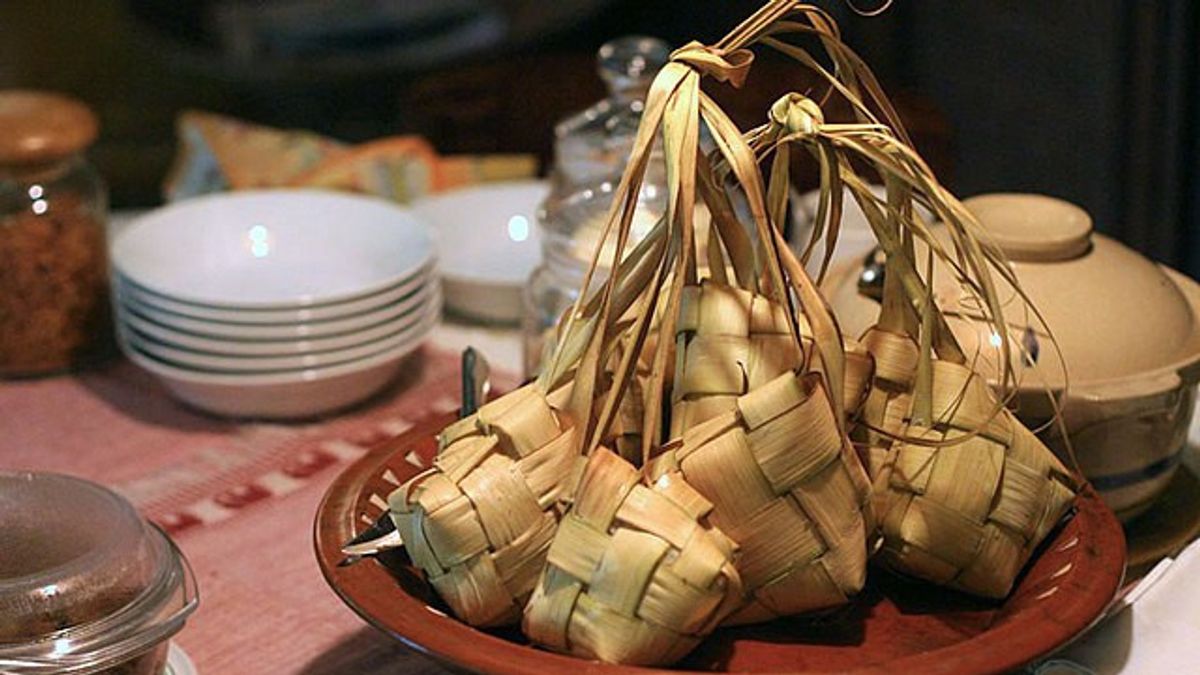
JAKARTA - Ketupat is a must-serve to celebrate Eid al-Fitr. This food is usually neatly lined up on the table to be eaten together with the families who come.
In Javanese society, the tradition of Eid is celebrated twice, Eid al-Fitr and Eid al-Ketupat. Eid al-Fitr is celebrated on 1st syawal, while Eid al-Fitr is celebrated a week later, precisely on the 8th of Syawal.
Although different days, moments of warmth remain the same. Similarly, the food served, namely ketupat. Eating ketupat became a tradition in the celebration of Eid al-Fitr. And it turns out that ketupat is not an ordinary dish, but rather there is an implied meaning in it. So what does it mean and what is the history of ketupat?
Introduced Sunan KalijagaLebaran Ketupat was first introduced by Sunan Kalijaga, one of the 9 walisongo who spread Islam in Indonesia in the 15th to 16th centuries.
Dito Alif Pratama, a religious social observer in an article published in NU Online explained that Sunan Kalijaga used to introduce the two terms Bakda to javanese people. The first is Bakda Lebaran and the second is Bakda Kupat.
Bakda Lebaran is the procession of Eid prayer one Syawal. Here, the tradition of praying for each other and forgiving fellow Muslims is done.
Meanwhile, Bakda Kupat which was held a week after Lebaran, Javanese Muslim community made ketupat from rice. This ketupat is then delivered to the closest relatives and elders as a symbol of togetherness and a symbol of affection.
Regarding the implementation of Lebaran Ketupat, Dito explained, the tradition of Lebaran Ketupat is based on the sunnah of the Prophet Muhammad SAW. Prophet Muhammad SAW encourages Muslims to fast sunnah 6 Days in the month of Syawal.
So, after carrying out syawal fasting for 6 days, javanese Muslim community held Lebaran Ketupat on the eighth day of Syawal month introduced by Sunan Kalijaga.
Sorry symbolKetupat is not just food during Lebaran. There is a philosophy derived from the Javanese term Ngaku Lepat (admitting mistakes) and papat practice (four actions).
Dito explained, ngaku lepat practiced in conjunction with the tradition of sungkeman when a child kneels and apologizes in front of his parents.
Not only to parents, ngaku lepat also applies to apologize to neighbors and relatives. When a person eats ketupat served by his relatives, then it means that the door of forgiveness has been opened and all wrong and wrong between the two is erased.
Fadly Rahman, historian of Universitas Padjadjaran Bandung said in his interview with Kompas, explained, Sunan Kalijaga made ketupat as a culture as well as Javanese philosophy that blends with Islamic values. Meanwhile, papat practice is symbolized by the four sides of the ketupat.
Since the time of the KingdomAnother description of the history of Lebaran Ketupat can be found in the article posted on the Historia page. In the article, it is explained that Lebaran Ketupat is based on the tradition of worship of Dewi Sri, goddess of agriculture and fertility, protector of birth and life, wealth and prosperity.
Dewi Sri is the highest and most important goddess for agrarian society and was glorified during the time of ancient kingdoms such as Majapahit and Pajajaran. Until now, the people of Java, Sunda and Bali still respect Dewi Sri.
We can find the ketupat tradition performed on Hindu communities and local beliefs. In Kapal Village, Badung, Bali, people conduct ketupat war to obtain safety and welfare.
Other BERNAS
The English, Chinese, Japanese, Arabic, and French versions are automatically generated by the AI. So there may still be inaccuracies in translating, please always see Indonesian as our main language. (system supported by DigitalSiber.id)












